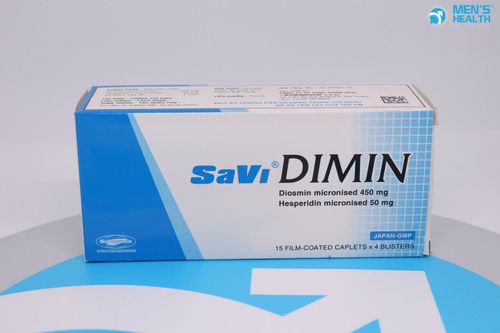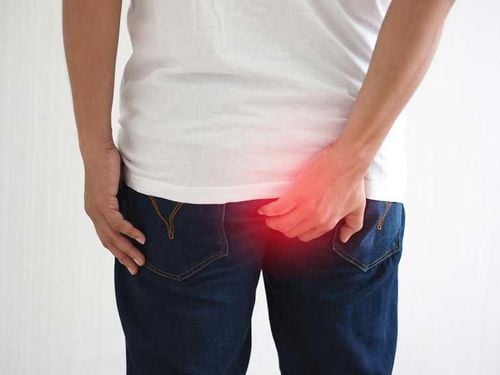This is an automatically translated article.
Anal fistula, if not treated in time, will cause many complications for the patient. The evaluation of anal fistula by imaging tests plays an important role in diagnosis as well as supportive treatment.
1. What is anal fistula?
Anal fistula is a disease that is less life-threatening but causes a lot of trouble for patients, affecting daily quality of life. The disease can occur at any age, but is more common in middle age.
The disease will cause the appearance of small nodules in the anus and perineum. These small nodules often have a yellow discharge with an unpleasant odor. When the patient defecates, stool will leak through the fistula, causing the anus to have pustules, pain, swelling ... When having sex, the anal fistula will make the patient very uncomfortable and painful.
There are many causes of anal fistula, but the main cause is still due to complications after surgery or other diseases such as: rectal rupture, anal abscess, tuberculosis bacteria, complications after hemorrhoidectomy and episiotomy ... If not treated properly, anal fistula will cause many complications, thereby reducing the health and quality of life of the patient.
2. The role of imaging tests to evaluate anal fistula
Imaging tests to evaluate anal fistula have a certain role in the diagnosis and treatment of the disease. Specifically:
MRI fistula technique MRI fistula technique plays an important role in assessing fistula before and after surgery. This technique has 97% sensitivity, 100% specificity in fistula detection, identification of accessory fistulas, complex fistulas and identification of anatomical relationships.
Contrast fistula technique According to studies, diagnosing anal fistula by contrast fistula technique has an accuracy of about 16%, because it is difficult to assess the extent of secondary expansion due to insufficient filling of contrast agent. . At the same time, this technique also does not have the ability to see the anal sphincter, so the relationship of the fistula cannot be determined.
Transanal ultrasound The ultrasound technique to evaluate anal fistula will assist the doctor in collecting 3D images of the anorectal canal. Based on the anatomical structure of the anorectal canal and 3D images, the doctor will determine in detail the location, number and direction of the fistula.
In particular, this method can help the surgeon know exactly where the fibrous tissue needs to be removed. This is considered an indispensable test before performing fistula removal surgery.
Blood tests Blood tests can help your doctor check your liver and kidney function or see if you have metabolic disorders or a weakened immune system. In particular, performing a blood test can also help check the level of inflammation of the anal fistula.
Colonoscopy This method is done to examine the inside of the large intestine to evaluate gastrointestinal symptoms such as bleeding, abdominal pain or changes in bowel habits.

Các xét nghiệm hình ảnh đánh giá rò hậu môn có một vai trò nhất định trong việc chẩn đoán cũng như hỗ trợ điều trị bệnh.
3. Treatment and prevention of anal fistula
Anal fistulas mostly require surgery because they rarely heal on their own. The choice of treatment method will depend on the location and complexity of the fistula. Specific treatment methods are as follows:
Fistula surgery: This is the most common method in the treatment of anal fistula. The doctor will cut along the entire length of the fistula to open it and help the wound heal; Seton technique: In cases where the fistula penetrates a significant part of the anal sphincter, the doctor will ask the patient to place a seton to help the fistula drain before proceeding with other surgical methods; Some other surgical methods such as: Excision of the fistula and suture of the broken sphincter, changing the mucosal flap to cover the inner hole of the fistula, laser surgery or using biological shim to fill the fistula. To ensure safety, the diagnosis and treatment of anal fistula should be performed at reputable medical facilities, highly qualified doctors and modern medical equipment. If there is any mistake, the anal sphincter is damaged, which will make the patient lose control when defecating. Currently, Vinmec International General Hospital is one of the top quality hospitals in the country, trusted by a large number of patients for medical examination and treatment. Not only the physical system, modern equipment: 6 ultrasound rooms; 4 DR X-ray rooms (1 full-axis, 1 intensifier, 1 synthesizer and 1 mammogram); 2 portable X-ray machines DR; 2 multi-row computer tomography rooms with receivers (1 128 rows and 1 16 rows); 2 rooms for magnetic resonance imaging (1 machine 3 Tesla and 1 machine 1.5 Tesla); 1 room for 2 levels of interventional angiography and 1 room to measure bone mineral density.... Vinmec is also the place where a team of experienced doctors and nurses will gather a lot of support in diagnosis and detection. early signs of abnormality in the patient's body. In particular, with a space designed according to 5-star hotel standards, Vinmec ensures to bring the patient the most comfort, friendliness and peace of mind.
Please dial HOTLINE for more information or register for an appointment HERE. Download MyVinmec app to make appointments faster and to manage your bookings easily.













